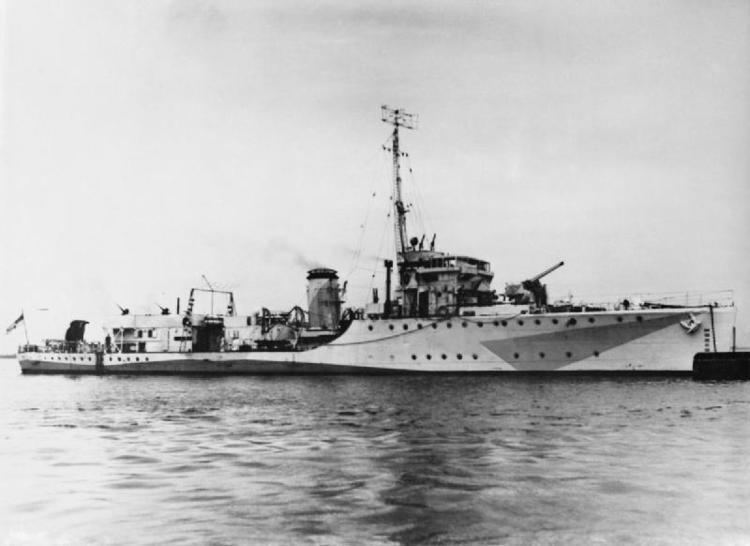In commission 1935–1950 Lost 2 | Built 1934–1939 Completed 9 | |
 | ||
The Kingfisher class was a class of nine patrol sloops of the British Royal Navy built in three groups of three each during the 1930s, that saw service during World War II, mainly on East coast convoys in the North Sea.
Contents
Design
The Kingfisher class was an attempt to build a patrol vessel under 600 tons, due to the lack of clauses on vessels this size in the London Naval Treaty of 1930. It was intended it would escort coastal shipping in wartime. Its small size and the resultant short range that this entailed (it was based on a scaled-down destroyer) rendered it unsuitable for open ocean work.
The design had a couple of shortcomings: firstly, it was designed to too high a standard; constructed to full naval warship specifications and powered by geared steam turbine engines, it was not suitable for mass production; and, it was armed with only a single 4-inch gun forward and depth charges aft, which severely limited their ability to defend themselves, let alone their charges.
Modifications
The woeful lack of defensive armament was addressed early in the war by adding a multiple Vickers machine gun on the quarterdeck in the Kingfisher and Kittiwake groups, as per the Shearwaters. As they became available, two single 20 mm Oerlikon guns were added, on single pedestal mounts on the deckhouse aft, with the useless machine gun being replaced later with a further pair of such weapons. Centimetric Radar Type 271 was added on the roof of the bridge as it became available, this was a target indication set capable of picking up the conning tower or even the periscope or schnorkel of a submarine. Radar Type 286 air warning was added at the masthead. The ships that had the Mark V gun on the open mounting HA Mark III had a shield added to give the gun crews a measure of protection on the exposed fo'c'sle.
Kingfisher group
Kittiwake group
Shearwater group
In fiction
Nicholas Monsarrat, the author of The Cruel Sea, served in two Kingfisher-class sloops: HMS Guillemot in 1942 as First Lieutenant, and HMS Shearwater in 1943 as Captain, after they had been reclassified as corvettes. HMS Dipper and HMS Winger were fictional Kingfisher class corvettes in his stories East Coast Corvette (1943) and Corvette Command (1944)
